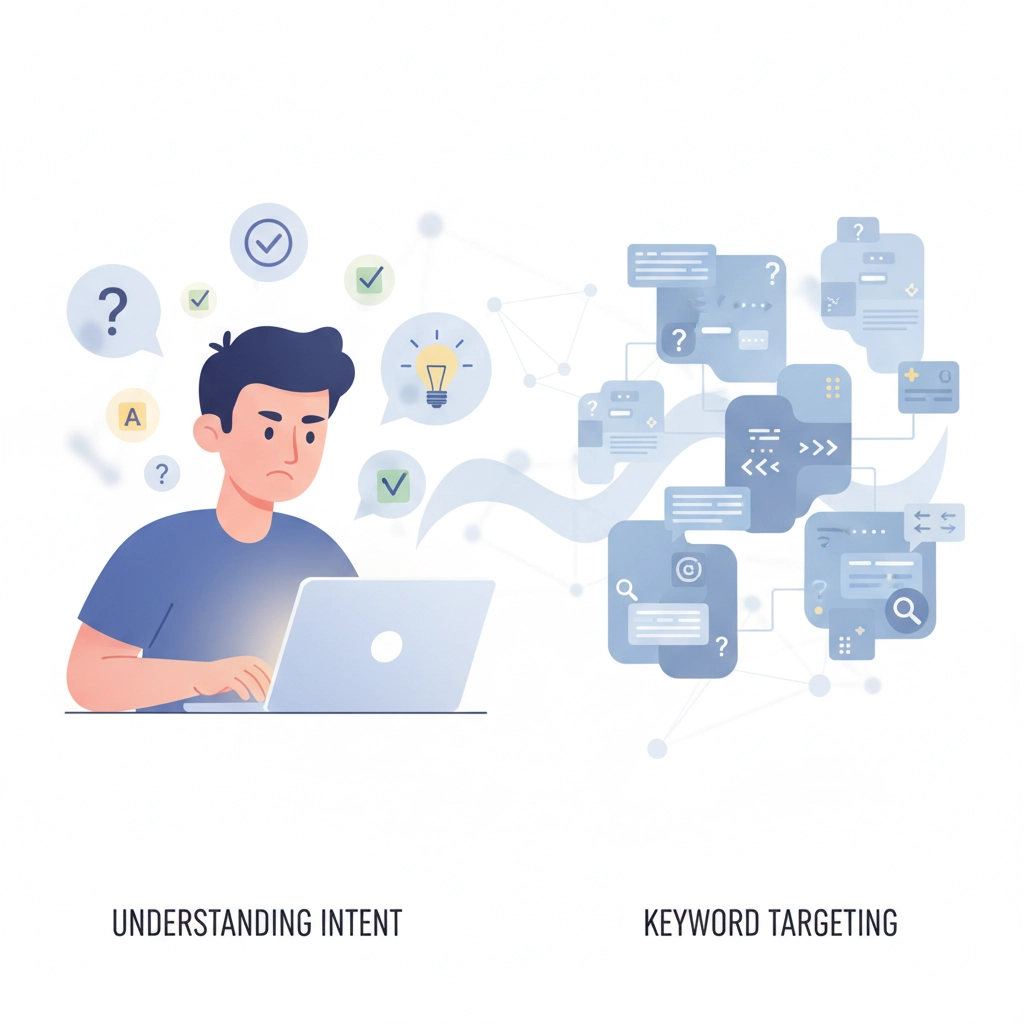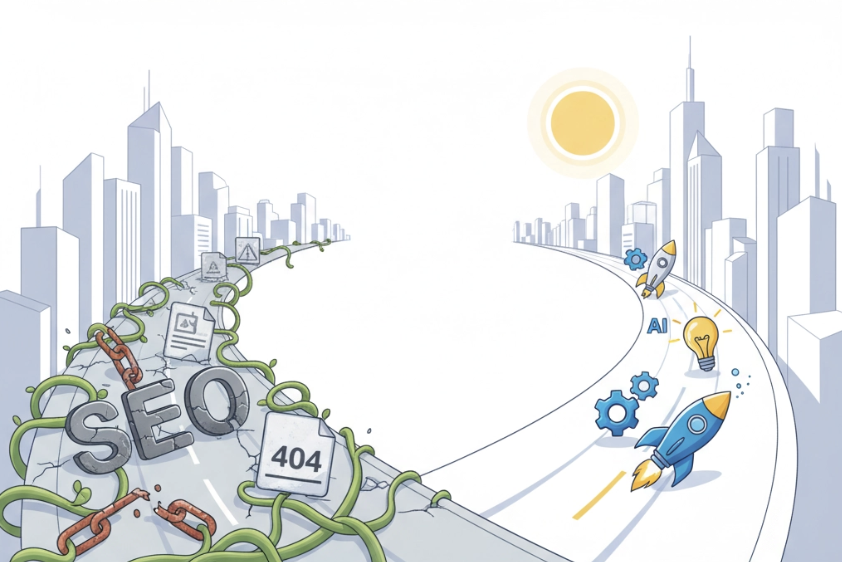Search engine marketing (also know as Paid Search) in 2025 has never been more exciting, or more confusing, which is why search engine marketing mistakes are happening all too frequently. With AI taking center stage and new platform updates rolling out every month, it’s easy to stumble into pitfalls that can sink your campaigns before they’ve even found their groove.
If you’ve felt like Google Ads was playing 3D chess while you were working on your basic moves, or if you’re spinning your wheels on SEO with less-than-stellar results, you’re not alone. In this post, I’ll walk you through the five most common search engine marketing mistakes I see right now, especially those amplified by AI updates, and, most importantly, how you can fix them.
Let’s get hopeful, practical, and totally honest about what’s working (and what’s so 5 years ago) in SEM this year.
1. Inconsistent Conversion Tracking (The AI Data Diet Disaster)
Tracking conversions should be your home base in SEM. But if your setup has different attribution methods, count types, or conversion windows across campaigns, your data’s a mess, and so is your AI optimization.

Why this matters:
Machine learning tools like Google’s Smart Bidding eat up this data to figure out what’s working. When you provide inconsistent data, it’s like feeding your campaign junk food: AI can’t learn, optimize, or scale accurately. That means wasted budget and missed opportunities.
What to do, starting today:
- Audit your conversion tracking setup, make sure all high-value actions use the same attribution model and conversion window.
- Standardize your methodology across the account for apples-to-apples data.
- Regularly spot-check for new or duplicate conversions that might have snuck in.
Pro tip: If you’re working with a team, make documentation and periodic audits a habit. (You’ll thank yourself when reviewing results in Q4!)
2. Neglecting Search Intent in the Age of AI (Keywords are not Answers)
If you still target keywords first and ask questions later, beware! Search engines in 2025 are all about intent. Google’s AI now deciphers context, relationships between words, and what users really want, even in the most cryptic queries.

Where folks go wrong:
Over-optimizing for keywords and ignoring the human behind the search. This results in content that checks all the SEO boxes… but doesn’t solve problems or satisfy curiosity.
“Google’s algorithms continue to focus on rewarding content that demonstrates expertise, experience, authority, and trustworthiness (E-E-A-T).” – Search Engine Journal (source)
How to fix it:
- Before creating content, investigate the “why” behind your keywords.
- Google your target phrase, what’s ranking? Is it a how-to article, a product landing page, a quick answer?
- Shape your content or ad copy to address that exact need, not just the phrase itself.
Quick exercise: Next time you build a campaign, jot down what you think your ideal customer is really looking for. Use this as your north star for copy and creative.
3. Over-Relying on AI for Complete Content Automation
AI content generators are awesome. (Heck, you’re reading an AI-powered blog post right now!) But total automation is a slippery slope. Google’s AI is trained to spot content that feels thin, regurgitated, or worse, generic.

The big mistake:
Publishing 100% AI-generated blog posts, ad copy, landing pages, and expecting instant wins. Users, and search engines, want to feel your expertise, perspective, and voice.
“AI should be your creative co-pilot, not your autopilot.” – Suse Barnes, Susby Digital Marketing
What works instead:
- Use AI for brainstorming, structural drafts, and optimizing on-page elements.
- Always review, rewrite, and inject real experience or unique brand value before publishing.
- Add stories, case studies, or original images, anything that makes your content unmistakably “you.”
4. Failing to Adapt SEO Techniques to AI-Driven Algorithm Updates
Remember the days when keyword density and backlink swaps got you to page one? Neither does Google. In 2025, clinging to old SEO hacks, while tempting, is a recipe for stagnation.
Why it’s risky:
AI updates are coming fast and furious. Google is actively changing how it prioritizes safety, accuracy, personalization, and user experience. If you’re still optimizing like it’s 2018, you could be missing ranking opportunities or, worse, tanking your visibility.
Solutions and sanity-savers:
- Make it a weekly (yes, weekly) ritual to catch up on major algorithm updates via sources like Search Engine Land or Google’s Search Central Blog.
- Spot-test new or deprecated features in Search Console and Google Ads, experiment on a few pages or campaigns at a time.
- Keep a “testing wishlist” to systematically try out new SEO methods and focus on what actually boosts your rankings or conversions.
Friendly reminder: The only constant in search engine marketing is CHANGE.
5. Abandoning Exact Match Keywords for AI-Driven Broad Match
Google and other platforms love to nudge us toward “smart” broad match keywords, after all, their AI loves more freedom! But ditching exact match keywords altogether? Big oof. Broad match is fantastic for discovery, but exact match remains the king of conversions for specific, high-intent terms.

Where campaigns go sideways:
Removing all precision targeting and hoping AI will read your mind (and that of your audience). Broad match is broader than you think, it can bring in a lot of irrelevant clicks and wasted spend.
Best of both worlds:
- Run a mix! Keep your top-converting, high-value terms as exact match.
- Let AI-powered broad match supplement your reach and uncover new opportunities, but keep a close eye on performance reports.
- Always negative match out irrelevant queries to keep your traffic clean.
Quote from the trenches:
“Exact match still rules for high-intent actions, don’t let automation take away your steering wheel.” – Anonymous PPC pro (aka, a friend who’s burned by broad match one too many times)
Staying Ahead in the AI Era
Let’s recap, team Susby-style:
- Standardize your tracking: Clean data fuels smarter AI.
- Map to intent: Serve what people want, not just what they type.
- Partner with AI, don’t outsource to it: Human creativity (HI) + AI scale = magic!
- Keep learning: Google’s changing. So must we!
- Balance your keywords: Use AI for scale, but keep your best bets close.
Search engine marketing is about collaboration, between you, your audience, and the smart technologies powering the world’s biggest stages. Find your balance, stay curious, and never be afraid to audit, test, and try again.
Frequently Asked Questions
Q1: How do I know if my conversion tracking is inconsistent?
Review your Google Ads or Analytics setup. Compare attribution models, conversion windows, and event definitions across campaigns. If they’re not aligned, update them for consistency. Need help? Google’s conversion tracking guide walks you through it.
Q2: Does Google penalize AI-generated content?
Not directly, but Google’s systems are trained to reward content that is original, helpful, and people-first. Fully automated, low-value content may be ignored. Learn more on Google’s Spam policies.
Q3: What’s the quickest way to check a keyword’s search intent?
Google it! Seriously. Take a peek at the top 3–5 organic results and ads. They reveal what users want, quick answer, in-depth review, shopping, etc.
Q4: How often does Google update its algorithms?
All the time! Major updates are announced a few times a year, but smaller tweaks happen constantly. Stay on top with Google’s Search Status Dashboard.
Q5: Should I always choose broad match over exact match in my Google Ads campaigns?
Nope! Use both wisely. Broad match is great for scaling, but exact match ensures precise targeting and conversions. It’s all about balance.
Have questions about AI, SEM strategy, or Susby’s approach? Chat with us in the comments or email suse at susby dot com, we’re here for your next “aha!” moment.
Happy optimizing!